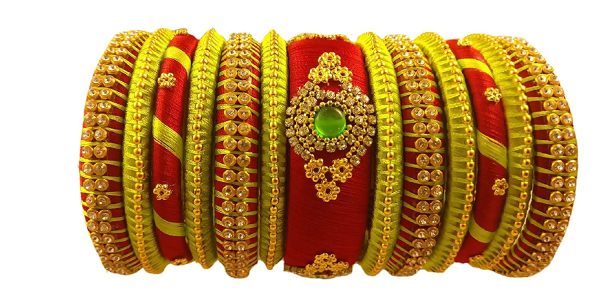Project Report For Bangle industry
Introduction
Project Report For Bangle Industry is as follows.
Bangles are bracelets often constructed of metal, wood, glass, or plastic, although they can also be manufactured from other materials. Traditionally, these adornments are worn chiefly by women from Asia and Africa. It’s not unusual to see a bride decked up in glass bangles at a wedding. For little girls, gold or silver bangles are the most popular. Bracelets are more flexible and round, whereas bangles are square.
The term bung is derived from Hindi (glass). Materials such as gold, silver, platinum, glass, and other precious and non-precious metals are utilized in their construction. White seashell bangles are worn by married Bengali and Oriya ladies of the Hindu faith. Bangles, known as “Bengali Bangles,” are worn by Bengali women and girls as an alternative to a gold bangle, which is much more expensive.
Bangles are created using cutting-edge technology. The majority of the equipment is manufactured in the area and is typically handled by locals. This equipment runs on natural gas rather than coal, which was formerly used as a fuel source. Natural gas, which is a more environmentally friendly option, reduces emissions. When it comes to glass heating,
They are manufactured by melting a thin gold strip onto a bronze band and fusing it. Certain men and women wear bangles on their arms or hands, known as the kada or kara. In Sikhism, the father of a Sikh bride gives the husband a gold ring, a kara (a steel or iron bracelet), and more.
When it comes to Punjabi brides, a chooda is a bracelet they wear on their wedding day. Stone worked white and red bangles from the band. Bangles are a part of Indian culture in virtually every segment of society, regardless of race or religious affiliation.

Market Potential Of Bangle Industry
The size of the worldwide jewellery market was estimated at USD 340.69 billion in 2022, and it is anticipated to rise at a CAGR of 4.6% from 2023 to 2030.
Festivals are a significant factor in the high demand for bangles in the Indian market. Giving bangles to underprivileged ladies is a common practice during certain occasions—fashion-consciousness fuels the entire industry. Though manufacture is centred in several areas, bangle stores may be found across the United States. Bangles continue to be a beloved product by ladies in India and from across the world, resulting in millions of dollars in annual income for the business. The world’s largest producer of glass bangles is Firozabad, Uttar Pradesh.
These bangles are most commonly made of lace and glass. These bangles are fashioned of lac, a kind of clay that is highly fragile. In Lad Bazar, bangles with brass or silver frames are in high demand for weddings. It is possible to make bangles from a wide range of materials. An average pair of lace bangles cost roughly Rs. 120, while a dozen glass bangles cost anywhere from Rs. 20 to Rs. 30. The amount of material and the level of ornamentation utilized to make the bangles significantly impact their price.
There is a huge need for bangles in India, which serve the entire country and sells to other countries. Traders in India benefit from a large number of international tourists to the country’s art galleries. These bangles are now accessible for buying online in India thanks to the development of online commerce.
As a result, they are in high demand among Indians. Because of the rise of internet culture and the ease with which people may use cellphones, online merchants are increasingly competing for customers’ business with brick-and-mortar bangle shops. This product is less accessible to consumers than it would be in a regular retail setting.
Project Report Sample On Bangle Industry
Need Help?
Create 100% Bankable Project Report

